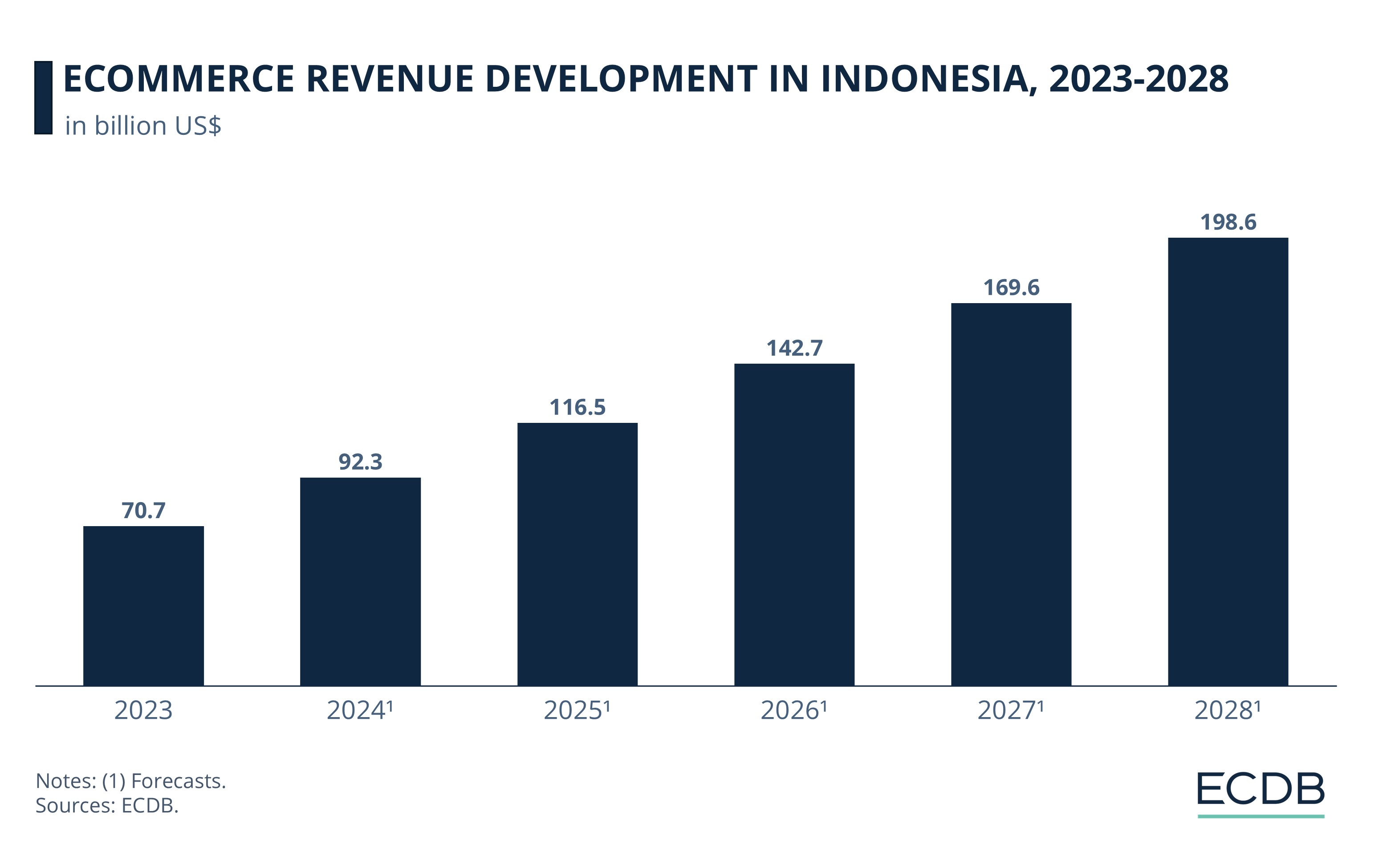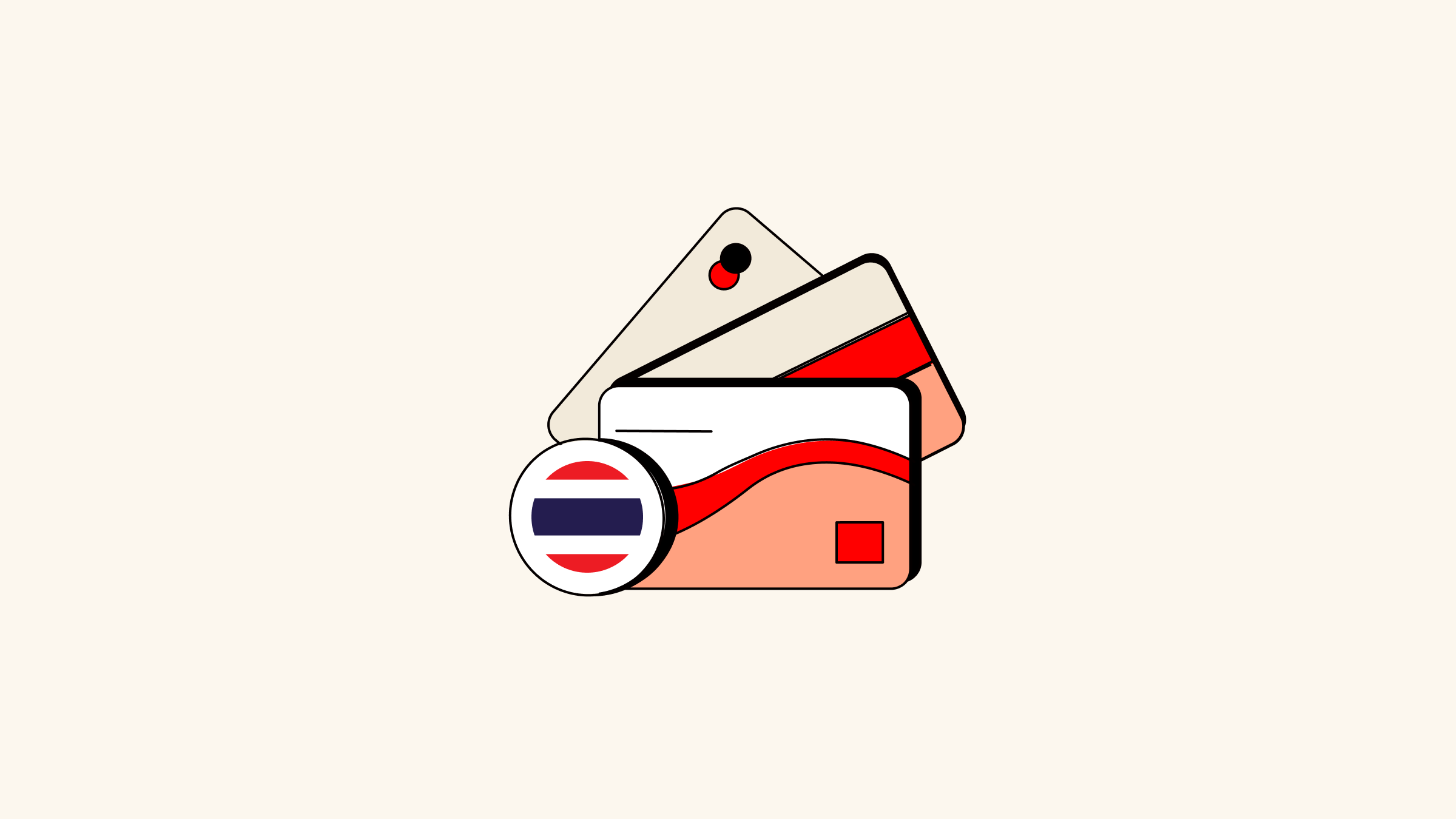Ever thought about expanding your online store to new horizons? Maybe you've heard the buzz about Southeast Asia, and specifically, the incredible growth happening in Indonesia's e-commerce scene. It’s a truly vibrant market, bustling with millions of eager online shoppers. But when you look at going global, one of the first questions that pops up is always, "How will my customers pay?" This is where understanding the unique landscape of Indonesian payment methods becomes absolutely crucial for your success. Let's dive in and demystify it together!
%20-%201.png?width=2400&height=1350&name=8%20Payment%20Methods%20in%20Indonesia%20for%20E-commerce%20(2025)%20-%201.png)
Why Indonesia is your next growth frontier
Indonesia, a dynamic market with approximately 290 million people, isn't just the world's fourth most populous nation; it's also a rapidly expanding e-commerce powerhouse. The Indonesian e-commerce market is projected to reach US$120 billion in 2025. This robust growth is expected to continue its upward trajectory, reaching US$204 billion by 2028. (Source: ECDB, September 2024).

The Indonesian e-commerce scene is characterized by high digital adoption, a young demographic (the largest group of consumers is aged 26-35, representing 46% of the market), and strong consumer confidence in online shopping. Approximately 20% of e-commerce sales in Indonesia come from cross-border transactions, showcasing a growing interest in international products and brands. (Source: Payments CMI, 2024).
The 2024 National Online Shopping Day (Harbolnas), held from December 10-16, recorded Rp 31.2 trillion (about $1.9 billion) in transactions, a 21.4% year-on-year growth compared to 2023. While this was 78% of the ambitious Rp 40 trillion target, it still attracted 98 million online shoppers with an average spend of Rp 318,000. Popular product categories included sportswear, fashion accessories, personal care, food, and beverages, with local goods making up 52% of sales. (Source: Jakarta Globe, 2024). This consistent focus on online shopping events underscores the market's dynamism.
For cross-border SMBs, simply having a great product isn't enough. You need to seamlessly integrate into how Indonesians prefer to pay.
Decoding the diverse Indonesian payment methods
Indonesia's payment ecosystem is uniquely diverse, blending traditional preferences with rapidly evolving digital solutions. Here’s a breakdown of the key methods you should consider, along with their latest reported shares in e-commerce payment volume:
1. Digital wallets: The dominant force (Approx. 35% of e-commerce payment volume)
%20-%202.png?width=2400&height=1350&name=8%20Payment%20Methods%20in%20Indonesia%20for%20E-commerce%20(2025)%20-%202.png)
Digital wallets have officially become the largest payment method in Indonesian e-commerce, reflecting a strong mobile-first consumer base, with 67% of e-commerce volume coming from mobile devices. Their convenience and widespread acceptance make them a must-have. Key players to integrate include:
-
GoPay: As the payment arm of Gojek, GoPay remains a leading player. GoTo Financial launched the GoPay app broadly in 2023, expanding its reach beyond Gojek/Tokopedia users.
-
DANA: Often called "Indonesia's Alipay," DANA continues to be a prominent e-wallet.
-
OVO: Connected to Grab, OVO has over 80 million users and is widely used for ride-hailing, food delivery, and online shopping.
-
ShopeePay: Crucial for sellers on the Shopee marketplace, offering seamless in-app payments.
-
LinkAja: Launched by Telkomsel, it continues to be a significant player.
-
DOKU Wallet: An established player, DOKU Wallet is a flexible e-wallet used in e-commerce and travel.
By supporting multiple prominent e-wallets, you cater to a vast, digitally-savvy consumer base and significantly reduce cart abandonment.
2. Bank transfers & virtual accounts: Still crucial (Approx. 26% of e-commerce payment volume)
%20-%203.png?width=2400&height=1350&name=8%20Payment%20Methods%20in%20Indonesia%20for%20E-commerce%20(2025)%20-%203.png)
While digital wallets have taken the lead, bank transfers remain a significant and trusted method for Indonesian consumers, particularly for higher-value transactions due to perceived security.
-
Virtual Accounts (VA): Merchants generate unique virtual account numbers for each transaction, simplifying reconciliation. Funds are typically settled quickly (D+0 or D+N days). Offering VA shows you understand local payment habits and builds trust.
3. Convenience store cash payments: Expanding reach
%20-%204.png?width=2400&height=1350&name=8%20Payment%20Methods%20in%20Indonesia%20for%20E-commerce%20(2025)%20-%204.png)
This method is vital for reaching segments of the Indonesian population who may be unbanked or prefer cash for online purchases. It's a rapidly growing channel that builds trust and extends your market reach.
-
How it works: Customers select this option online, receive a payment code, and then make a cash payment at local convenience stores such as Indomaret or Alfa Midi.
4. Buy Now, Pay Later (BNPL): Rapidly accelerating (Approx. 9% of e-commerce payment volume)
%20-%205.png?width=2400&height=1350&name=8%20Payment%20Methods%20in%20Indonesia%20for%20E-commerce%20(2025)%20-%205.png)
BNPL is experiencing explosive growth in Indonesia. The BNPL market is projected to reach an estimated value of US$13.59 billion in 2030, growing at an annual rate of 13.5%. It experienced a robust CAGR of 22.2% during 2021-2024.
Prominent BNPL providers include Tokopedia's "Pay Later", Kredivo, and Akulaku. BNPL services are widely embedded in leading e-commerce platforms. Offering BNPL can significantly increase average order values and reduce sales friction for higher-priced items, especially considering low traditional credit card penetration.
5. QRIS (Quick response code Indonesian standard): The unifying force
%20-%206.png?width=2400&height=1350&name=8%20Payment%20Methods%20in%20Indonesia%20for%20E-commerce%20(2025)%20-%206.png)
A significant government initiative, QRIS unifies various payment methods under a single, standardized QR code. Its adoption is soaring.
-
QRIS transaction volume surged by 154.86% annually in April 2025. As of Q1 2025, QRIS had 56.28 million users and 38.1 million merchants, with 93% being MSMEs. Total transactions reached 2.62 billion with a value of Rp262 trillion (approx. $16.3 billion) in Q1 2025.
-
How it works: Customers can scan a single QRIS code using any participating e-wallet or mobile banking app. This simplifies transactions for both consumers and merchants, making it an essential payment method for market entry.
6. Credit Cards: A niche, but growing segment (Approx. 13% of e-commerce payment volume)
%20-%207.png?width=2400&height=1350&name=8%20Payment%20Methods%20in%20Indonesia%20for%20E-commerce%20(2025)%20-%207.png)
-
It's essential to accept major international cards like Visa and Mastercard. Local card schemes like Gerbang Pembayaran Nasional (GPN) are also growing in importance for domestic transactions, with initiatives like Kartu Kredit Indonesia (KKI) contributing to adoption.
7. Direct debit: Streamlined bank transactions
%20-%208.png?width=2400&height=1350&name=8%20Payment%20Methods%20in%20Indonesia%20for%20E-commerce%20(2025)%20-%208.png)
Direct debit allows merchants to pull funds directly from a customer's bank account, offering a frictionless experience for real-time or recurring payments. This is ideal for subscriptions or repeat purchases. Major banks like BCA (OneKlik) and CIMB Niaga (OCTO Cash) offer direct debit services.
8. Cash on Delivery (COD): Diminishing but still present (Approx. 8% of e-commerce payment volume)
%20-%209.png?width=2400&height=1350&name=8%20Payment%20Methods%20in%20Indonesia%20for%20E-commerce%20(2025)%20-%209.png)
While once a dominant payment method, COD's share has gradually declined to approximately 8% of e-commerce payment volume, with the increasing popularity of e-wallets and BNPL services. However, it may still be relevant in certain segments or for building initial trust with new customers.
Crucial trends for cross-border SMBs
-
Digital Wallets Lead the Way: Digital wallets are now the top payment method by volume in Indonesian e-commerce, signifying a strong shift towards mobile and digital payments.
-
BNPL's Explosive Growth: This flexible payment option is increasingly favored, particularly by younger consumers, and will continue to drive spending.
-
QRIS as a Unifier: The universal QR code standard simplifies payment acceptance across various digital platforms, making it easier for merchants to integrate.
-
Shift from Cash: While convenience store payments thrive, the overall trend in e-commerce is a gradual move away from traditional cash-on-delivery as digital trust grows.
Optimize your e-commerce strategy for Indonesia
For cross-border e-commerce SMBs, mastering Indonesian payment methods is key to unlocking this high-growth market. By strategically integrating a robust suite of payment options—including virtual accounts, a variety of popular e-wallets, convenience store cash payments, BNPL, and QRIS—you can:
-
Maximize Conversion Rates: Meet customers where they are and eliminate payment friction.
-
Broaden Your Customer Base: Capture both banked and unbanked segments of the population.
-
Foster Trust: Demonstrate a commitment to understanding and serving local consumer preferences.
-
Minimize Cart Abandonment: Provide familiar, convenient, and secure checkout experiences.
All-in-one platforms like Shoplazza are designed for cross-border e-commerce, offering comprehensive payment solutions tailored to the Indonesian market. They allow you to seamlessly integrate with various local payment methods and digital wallets, ensuring your customers in Indonesia can pay using their preferred options. This blend of global compatibility and localized features makes Shoplazza an excellent choice for SMBs looking to efficiently expand into Indonesia and other international markets.
Conclusion
So, we've journeyed through the diverse and dynamic world of how Indonesians prefer to pay online, from popular e-wallets to the rise of BNPL and the unifying power of QRIS. It's clear that adapting to these specific Indonesian payment methods is key to unlocking this thriving market. By offering these familiar options, you're not just facilitating transactions; you're building trust and making shopping effortless for your customers. Ready to make your mark in Indonesia? A well-equipped platform like Shoplazza that supports these diverse payment options is your best first step.


